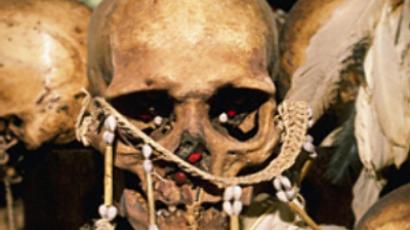Stalin's death camp survivors shed light on Gulag
The Kolyma region in Russia's Far East could have been known just for its vast mineral wealth and abundant fisheries. But the forbidding steppes became a testimony to one of the country's darkest periods. Isolated and remote, they were a major transit cen
The memory of Stalin's purges still haunts the area, with some residents still living after surviving the Gulag.
Semyon Vilensky was arrested in 1948 when he was twenty years old for singing a comic verse about Stalin at a student gathering.
That cost him first a prison term and then seven years in labour camps.
“The point of the Gulag was that there was no need for any indictment. Back then, hundreds of thousands of people were arrested, even for insignificant crimes, like minor theft. At that time, the Soviet Union was developing vast parts of its territory. And so, Stalin used all these prisoners at the labour camps. But our country paid too big a price. Russia could have had a population of over 400 million by now, if it hadn't been for that wonderful manager and his associates,” said Vilensky.
From 1930 to 1954, forced labour was an essential part of the Soviet economic system. The timber and gold it yielded were important export commodities, and Kolyma's abundant resources seemed tailor-made to serve this goal.
The so-called Far North Construction Trust was created to manage the exploitation of the area.
But the conditions were rough. The harsh climate and brutal treatment forced many to an early grave.
Vilensky says the great suffering of this region wasn't discovered till after Stalin's death.
“The people that started Kolyma were executioners. And since Kolyma was created as a trust of sorts, it wasn't overseen by any government bodies or committees. The head of the trust was the absolute ruler of these camps and its prisoners. When Soviet prosecution bodies first appeared in the region in 1953, after Stalin's death, they were horrified at the amount of crimes and deaths in Kolyma,” the labour camp survivor recalled.
A monument perched on a hill above Magadan is called the Mask of Sorrow. It commemorates the victims of political repression, including those that suffered and perished in the Gulag prisons.
All in all, around three million people lost their lives in the Kolyma camps.
Some 500 victims of the purges are still living in Magadan today.













